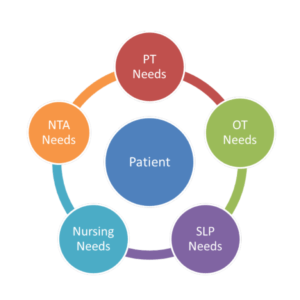Getting ready for assessment data and the IMPACT Act
Workgroups responsible for implementing the standardization of documentation codes across care settings under the Improving Medicare Post-Acute Care Transformation Act of 2014 (IMPACT Act) have been busy during the past year, and SNFs may have to be ready to report under the new assessment data as early as fall 2016, noted panel presenters at this week's Long-Term and Post-Acute Care Health IT Summit in Baltimore.
The milestone legislation mandates standardized ways to share clinical data across long-term and post-acute care settings. "Physicians were double documenting, even triple documenting the same information," said Stacy Mandl, RN, BSN, BSW, PHN, director, Division of Chronic and Post Acute Care, Centers for Medicare & Medicaid Services (CMS). "We need to reduce provider burden to drive quality, and we need to exchange data in the same language across settings."
Far more complicated than data sharing alone, the IMPACT Act dives into the longstanding problem of incompatible code sets: Skilled nursing uses MDS 3.0 coding, home healthcare uses OASIS, long-term care hospitals use CARE, and so on. It's tough stuff, notes panelist Zabrina Gonzaga, MSN, RN, Lantana Consulting Group. "How do you we come up with a language for information exchange, clinical quality measures and payment?"
The first efforts under the IMPACT Act, begun last year, have been to create a library of resources to help bridge the difference between code sets, a sort of map connecting the codes that refer to a certain condition or aspect of clinical coding.
Assessing assessments
The first big task is developing measures to standardize patient assessments. The first three topics of focus are skin integrity, falls, cognitive function and Medicare usage per beneficiary. Several more will follow, including medication reconciliation.
The implementation teams are grappling with not only what terms should be used to describe a certain thing, such as a pressure ulcer, but also what different care settings use to measure the severity of an ulcer.
The workgroup has developed a clinical documentation architecture (CDA) that includes a series of templates covering everything from transfer summaries to clinical care plans, consultant notes and medication management activity. The concept, Gonzaga explains, is a CDA that includes data fields that hold a wide variety of information yet are transferable to any of the code sets used in long-term/post-acute care.
"We need to get to the the sweet spot of data integrity" because data elements used for are care planning, reimbursement and care coordination," notes Tara McMullen, MPH, PhD, Quality Measures and Health Assessment Group, Center for Clinical Standards and Quality at CMS. "We need data that is clinically relevant, transferable and convergent. Then we can have longitudinal data that follows a person through multiple periods of time. We can better understand their trajectory, and providers can better understand their wants and needs."
The timeline is short, so SNFs should get on board now, McMullen advises. Should the final rule pass, SNFs would be subject to a compliance date for the first three assessments of October 2016.

Pamela Tabar was editor-in-chief of I Advance Senior Care from 2013-2018. She has worked as a writer and editor for healthcare business media since 1998, including as News Editor of Healthcare Informatics. She has a master’s degree in journalism from Kent State University and a master’s degree in English from the University of York, England.
Related Articles
Topics: Articles , Executive Leadership , Medicare/Medicaid , Regulatory Compliance









